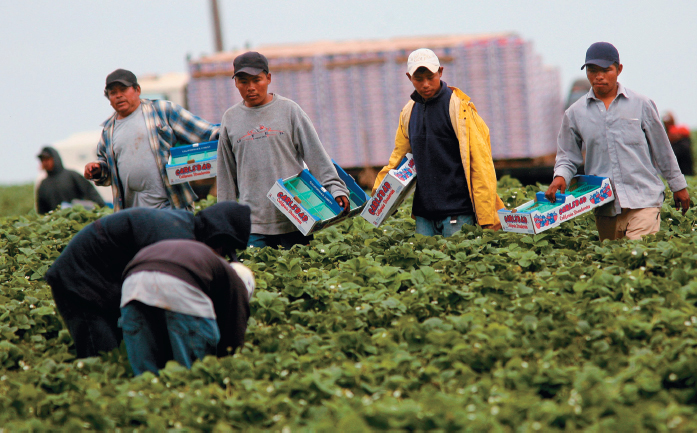The Internationalization of the United States
Printed Page 947
Section Chronology
The United States experienced the dynamic forces of globalization within its own borders. Already in the 1980s, Japanese, European, and Middle Eastern investors had purchased U.S. stocks and bonds, real estate, and corporations. Local communities welcomed foreign capital, and states competed to recruit foreign automobile plants. By 2002, the paychecks of nearly four million American workers came from foreign-owned companies, such as Honda and BMW.
Globalization was also transforming American society, as the United States experienced a tremendous surge of immigration, part of a worldwide trend that counted some 214 million immigrants across the globe in 2010. The promise of economic opportunity, as always, lured immigrants to America, and the Immigration and Nationality Act of 1965 enabled them to come. The law allowed close relatives of U.S. citizens to enter above the annual ceiling of 270,000 immigrants, thus creating family migration chains. Moreover, during the Cold War, U.S. immigration policy was generous to refugees from communism, welcoming more than 800,000 Cubans and more than 600,000 Vietnamese, Laotians, and Cambodians.
Globalization and American Demography
> Globalization and American Demography
- By 2006, the 35.7 million immigrants in the United States constituted 12.4 percent of the population.
- By the 1980s, the vast majority of immigrants came from Asia, Latin America, and the Caribbean.
- By 2004, 41 million Latinos constituted — at 14 percent — the largest minority group in the nation.
The racial composition of the new immigration heightened the long-standing wariness of native-born Americans toward newcomers. Pressure for more restrictive policies stemmed from beliefs that immigrants took jobs from the native-born, suppressed wages by accepting low pay, strained the capability of social services, or eroded the dominant culture and language. Americans expressed particular hostility toward immigrants who were in the country illegally — an estimated 12 million in 2008 — even though the economy depended on their cheap labor.
The new immigration was once again making America an international, interracial society. The largest numbers of immigrants flocked to California, New York, Texas, Florida, New Jersey, and Illinois, but new immigrants dispersed throughout the country. Taquerias, sushi bars, and Vietnamese restaurants appeared in southeastern and midwestern towns; cable TV companies added Spanish-language stations; and the international sport of soccer soared in popularity. Mixed marriages displayed the growing fusion of cultures, recognized in 2000 on Census Bureau forms, where Americans could check more than one racial category. Like their predecessors, the majority of post-1965 immigrants were unskilled and poor. They took the lowest-paying jobs, constituting nearly half of all farmworkers and housekeepers. They also performed other work that employers maintained native-born Americans would not do. Yet a significant number of immigrants were highly skilled workers, sought after by burgeoning high-tech industries. By 2006, nearly one-third of all software developers were foreign-born, as were 28 percent of all physicians.

CHAPTER LOCATOR
How did the United States respond to the end of the Cold War and tensions in the Middle East?
How did President Clinton seek a middle ground in American politics?
How did President Clinton respond to the challenges of globalization?
How did President George W. Bush change American politics and foreign policy?
What obstacles stood in the way of President Obama’s reform agenda?
Conclusion: How have Americans debated the role of the government?
 LearningCurve
LearningCurve
Check what you know.
QUICK REVIEW